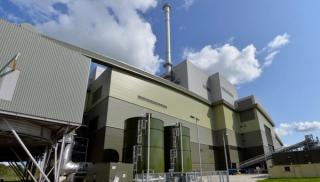
UK Emissions Trading Scheme (ETS) study
- Client Name
- Buckinghamshire Council
- Location
- England, UK

SLR developed a detailed assessment report and MS Excel model, allowing the council to evaluate and mitigate its potential exposure to costs associated with inclusion of energy from waste (EfW) facilities into the UK ETS.
Challenge
Fossil carbon emissions associated with EfW facilities are scheduled to be incorporated into the UK ETS from 2028, following an initial two-year transition period.
The council is faced with potentially significant additional costs associated with such emissions and wanted to proactively consider the anticipated extent of those costs, along with potential service and infrastructure improvement measures that could be implemented to effectively mitigate the financial impacts arising
Solution
Since the announcement of inclusion of EfW facilities within the UK ETS, SLR has successfully delivered a series of ETS-related projects for local authority clients across the UK.
For this project, a detailed waste flow model was developed to establish a baseline scenario. The council was then presented with a series of potential improvement options which could be assessed against the baseline position, from which a shortlist of preferred options was agreed and taken forward for detailed analysis.
These comprised several specific improvements to kerbside collection services, each of which was designed to maximise diversion of relevant waste streams, and also included consideration of how additional infrastructure could contribute to enhanced separation of relevant materials prior to combustion at the EfW facility.
Impact
Scheduling a series of interactive workshops ensured that SLR worked collaboratively with the council throughout the commission, to deliver a final assessment report that fully detailed and quantified the anticipated carbon and financial implications of each option.
A bespoke data model was also developed in Microsoft Excel to underpin the findings of the report. The model provided the council with a management tool that it can use to test key parameter sensitivities and make updates as new input data emerges in future years, to ensure that service changes implemented can be fully evidenced and justified.
“The data model provided is intuitive to review options and most importantly, straight forward to update. This will enable us to use the model in years to come as mitigation options develop and key variables change.”
- Buckinghamshire Council
